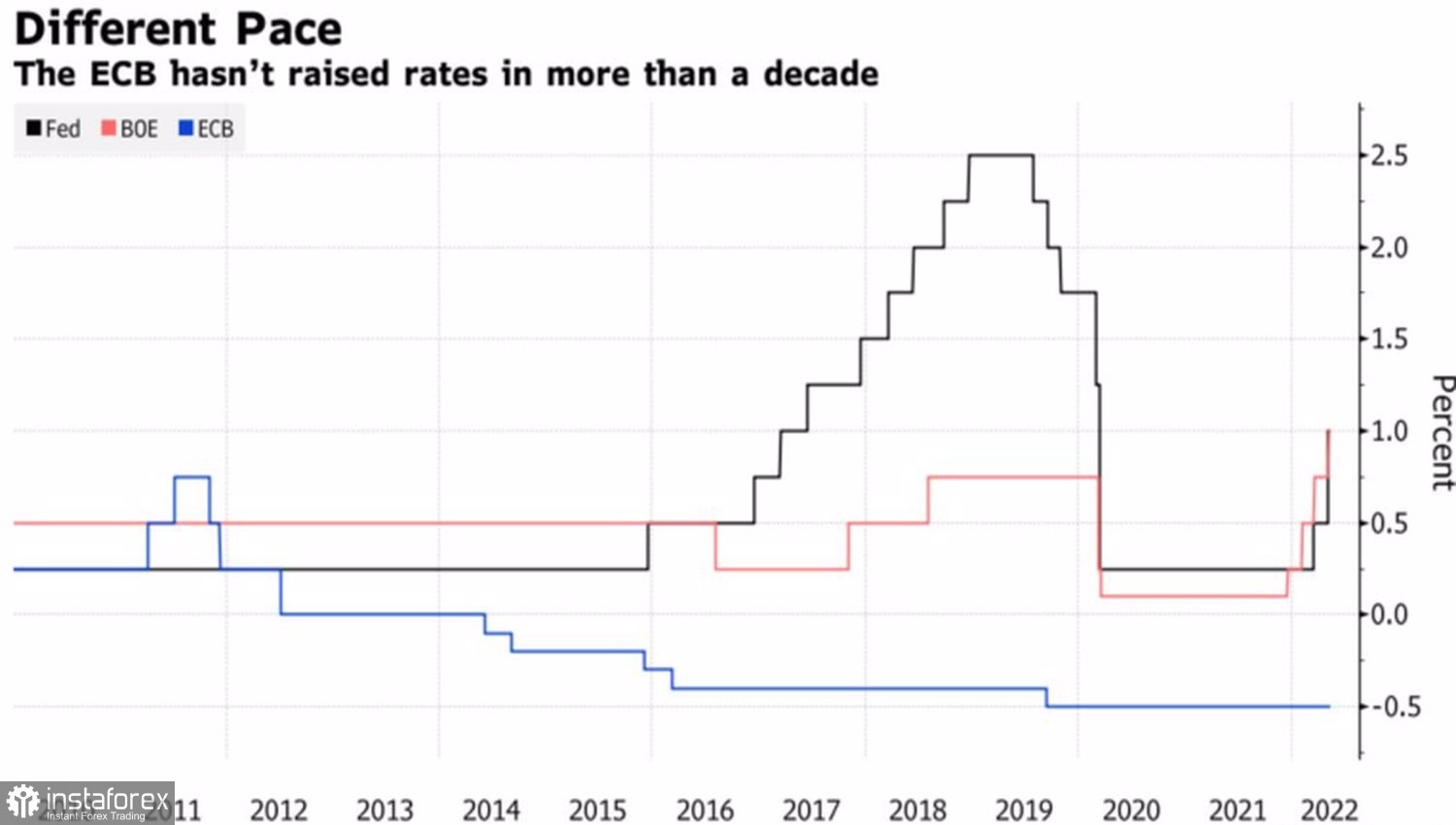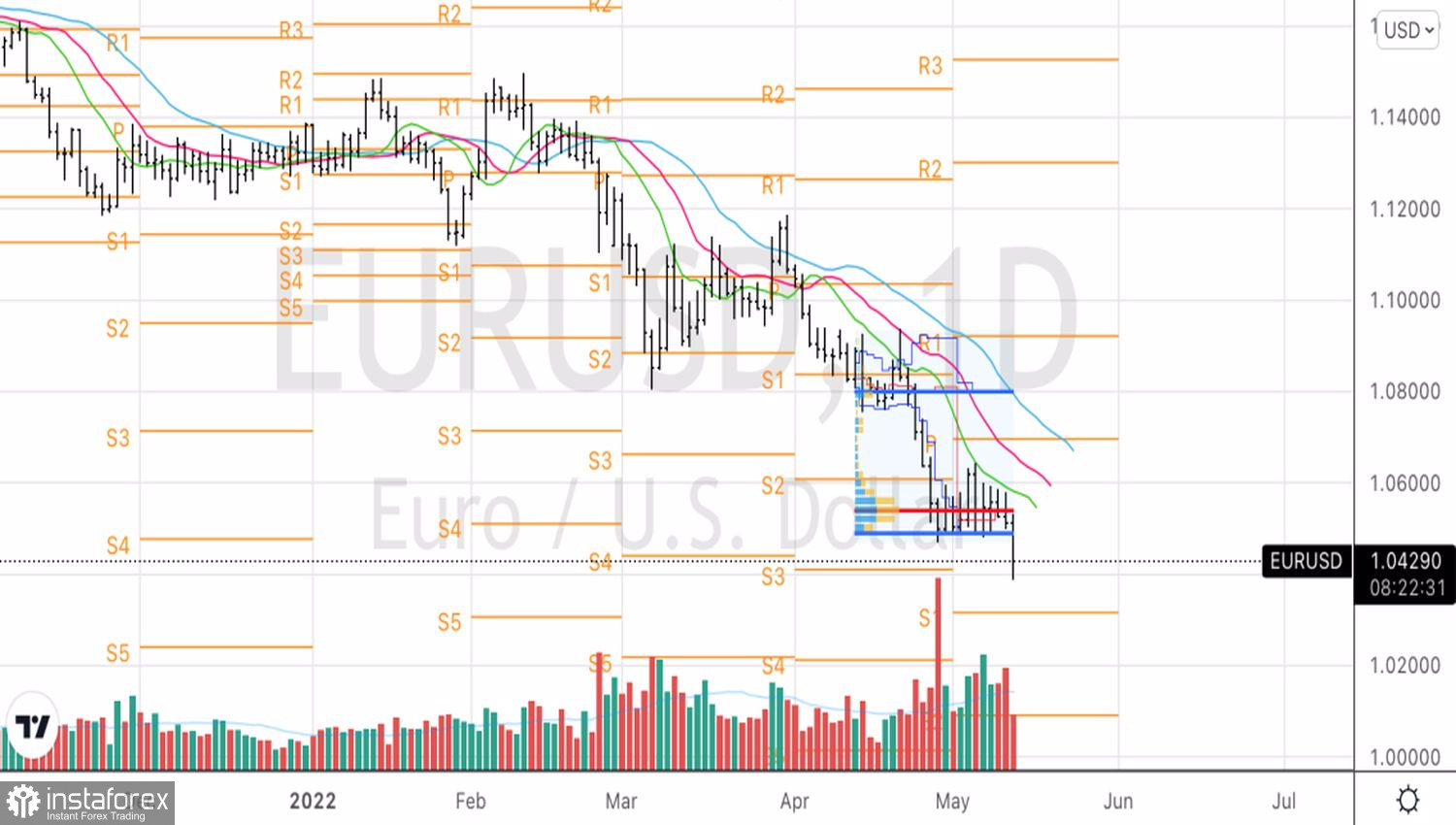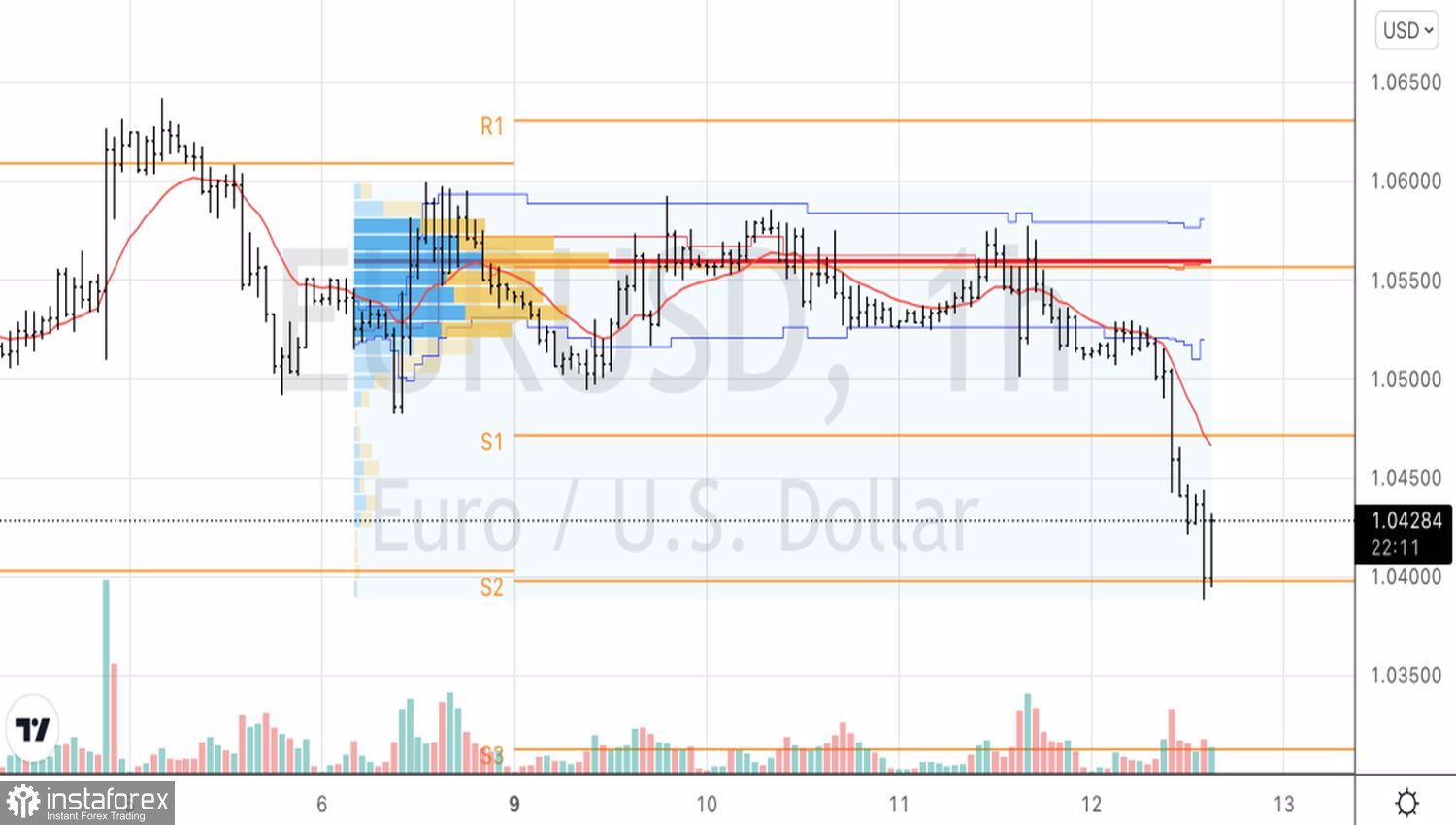When, beginning in mid-spring, ECB officials began to speak with one voice about raising rates, I had one single question—isn't it too late to move? The euro is moving by leaps and bounds towards parity against the US dollar, which is bad news for both inflation and the economy as a whole. The Eurozone is a net importer of oil and gas, and the lower its currency is quoted, the more expensive the raw material. A new round of the energy crisis is another step towards a recession that is already looming on the horizon.
In her last speech, ECB President Christine Lagarde noted that at the end of the second quarter, the quantitative easing program will be put to rest, after which it will take only a few weeks to raise the deposit rate. The start of monetary restrictions in July looks like a done deal, with the futures market setting expectations for higher borrowing costs at two more Governing Council meetings in 2022. Officials seem to like the plan. Bank of France Governor Francois Villeroy de Galhau, called the idea of moving the rate into a positive area this year from its current value of -0.5% reasonable, while his colleague from Hungary, Pierre Wunsch, called such a scenario a simple matter.
The problem is that you can't fool the markets. There can be no talk of any aggressive monetary restriction in the eurozone, bled white by the energy crisis. Futures contracts signal borrowing costs rising to 1.25% by mid-2024. By that time, the Fed funds rate is likely to exceed 4%, and the different rates of tightening of monetary policy by the Fed and the ECB are forcing EURUSD to fall like a stone.
Dynamics of the main rates of the world's leading central banks

Personally, it is obvious that the European Central Bank, which has been sitting like a "dove" for a long time, turned on the "hawk" at full volume only because of the depreciation of the regional currency. Its weakening will certainly accelerate inflation and increase the cost of imported goods, including oil and gas, which will exacerbate the crisis in the cost of living in the euro area.
At the same time, you need to understand that the ECB, unlike the Fed, has its hands tied. The eurozone economy is at risk of falling into recession even without monetary restrictions. If you finish it off by raising rates, then the decline will be as deep as in 2008 or in 2020. Lagarde and her colleagues must be extremely careful, and this caution prevents the EURUSD bulls.
The situation is aggravated by the resuscitation of the Brexit theme. Britain insists that the Northern Ireland protocol not only kills trade in the region, but also leads to political confusion. London is threatening to cancel the deal with the EU unilaterally, raising the risks of a trade war and putting serious pressure on both the pound and the euro.
Technically, on the daily chart, the EURUSD has finally left the 1.049–1.061 trading range. It is gratifying that recommended short entries on breaks of supports at 1.051 and 1.049 turned out to be fruitful. We keep short positions and periodically increase them on the rebound from 14-period EMA on the hourly timeframe.
EURUSD, Daily chart

EURUSD, Hourly chart

 Tiếng Việt
Tiếng Việt 
 Русский
Русский English
English Bahasa Indonesia
Bahasa Indonesia Bahasa Malay
Bahasa Malay ไทย
ไทย Español
Español Deutsch
Deutsch Български
Български Français
Français 中文
中文 বাংলা
বাংলা हिन्दी
हिन्दी Čeština
Čeština Українська
Українська Română
Română

